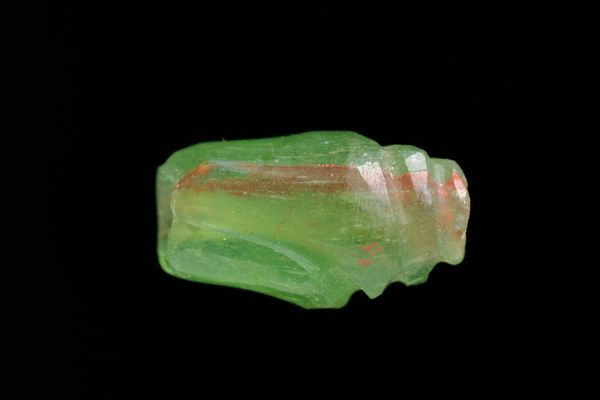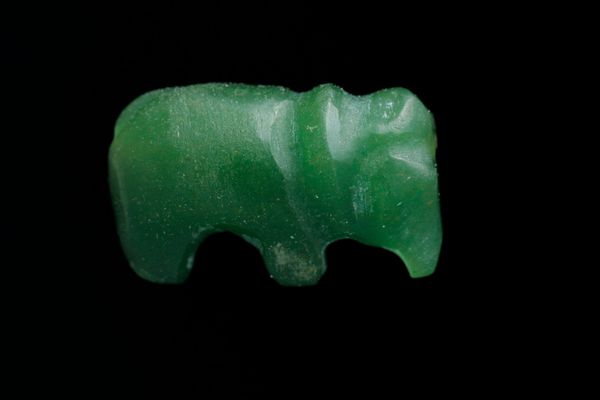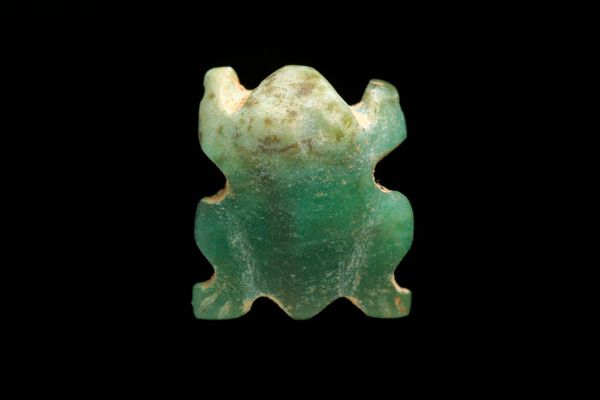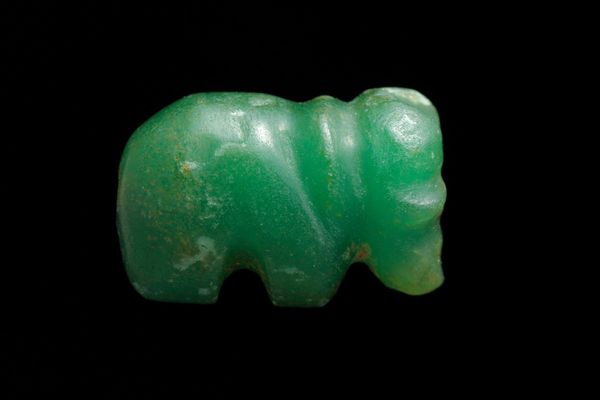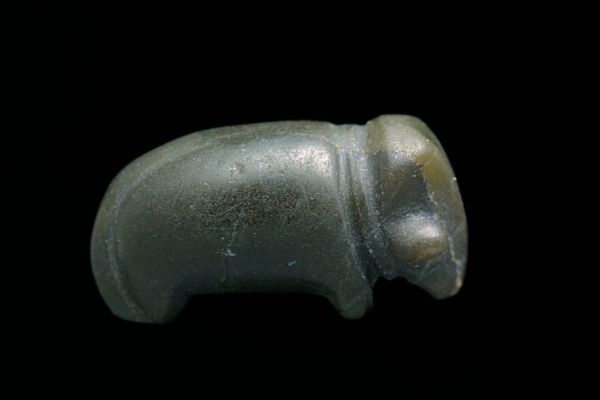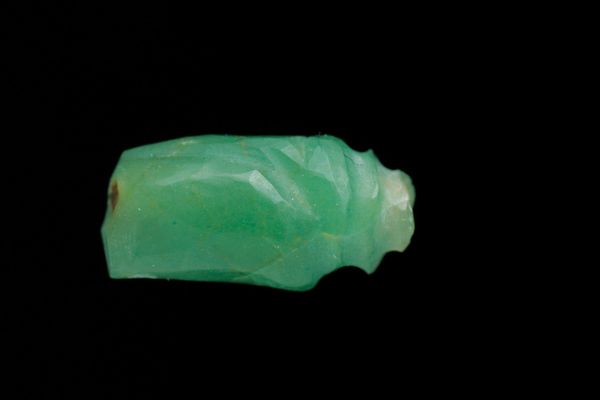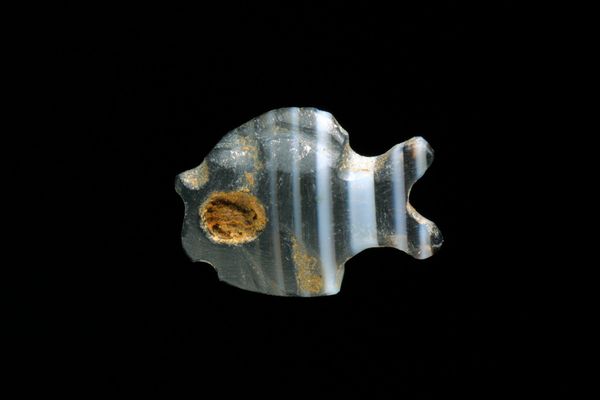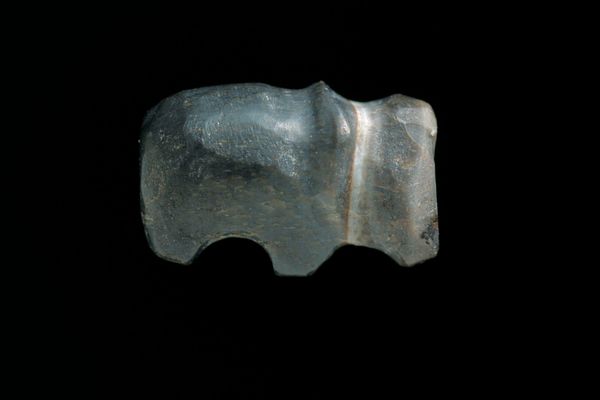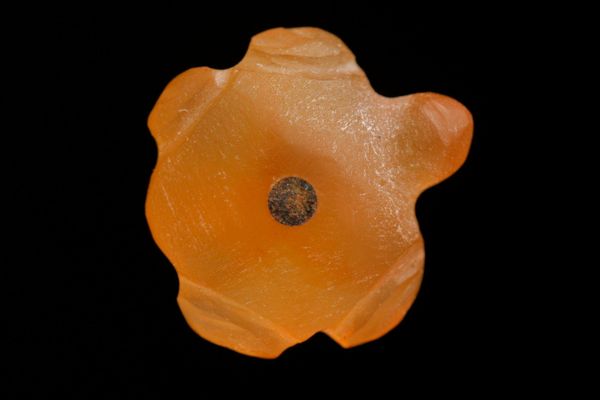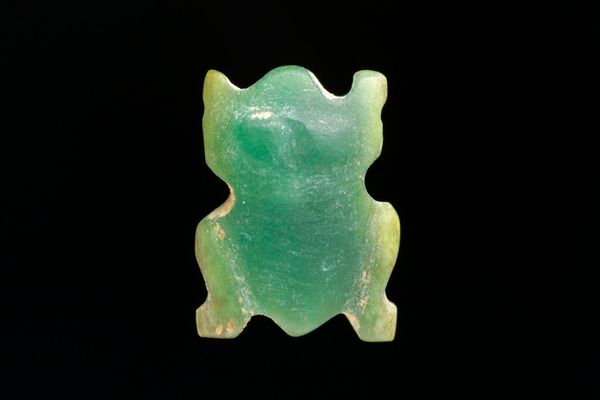
carving, photography, sculpture
#
still-life-photography
#
carving
#
figuration
#
photography
#
macro shot
#
geometric
#
ancient-mediterranean
#
sculpture
#
macro
#
macro photography
#
miniature
Dimensions: 1/4 x 1/2 x 1/2 in. (0.6 x 1.3 x 1.3 cm)
Copyright: Public Domain
Editor: So, we’re looking at this small, green carving called "Bead in the Shape of a Tortoise" from sometime between 501 and 800 AD. It’s currently held at the Minneapolis Institute of Art. The photograph is a macro shot, so it appears much bigger than it actually is, I imagine. What strikes me is its simplicity, and that somebody cared enough to make something functional, beautiful and lasting out of it. How does a piece like this speak to you? Curator: Considering it materially, this bead represents so much more than just adornment. It's about the labor expended, the resources extracted, and the value placed on the tortoise itself within its cultural context. Imagine the tools necessary to carve this so precisely, the social organization that enabled this kind of specialized craftsmanship to exist. Do you think that this object had a special role to the society of its time? Editor: That’s interesting. I hadn't considered the level of craft involved and, yes, maybe it was some sort of symbol with ritual significance beyond mere decoration. Maybe representative of longevity or status, perhaps even acting as a primitive form of currency? Curator: Precisely! Its creation likely wasn't isolated. Perhaps it was a component within a complex network of trade, religious beliefs, and hierarchical structures. Think about who wore it, where, and what this tortoise represented in their belief system. The raw material is very relevant, where was it sourced, what significance does it hold? Editor: That makes me see the bead not just as a static object, but as evidence of social networks and economic activity. I can see it's not just the artistry that matters, but the web of relationships that made it possible. Curator: Exactly. Its materiality allows us to question traditional boundaries and connect it to something beyond simple artistry. By appreciating its physical form, we learn of the society which conceived and constructed it. Editor: This completely changed the way I will view similar historical artifacts in the future.
Comments
No comments
Be the first to comment and join the conversation on the ultimate creative platform.


